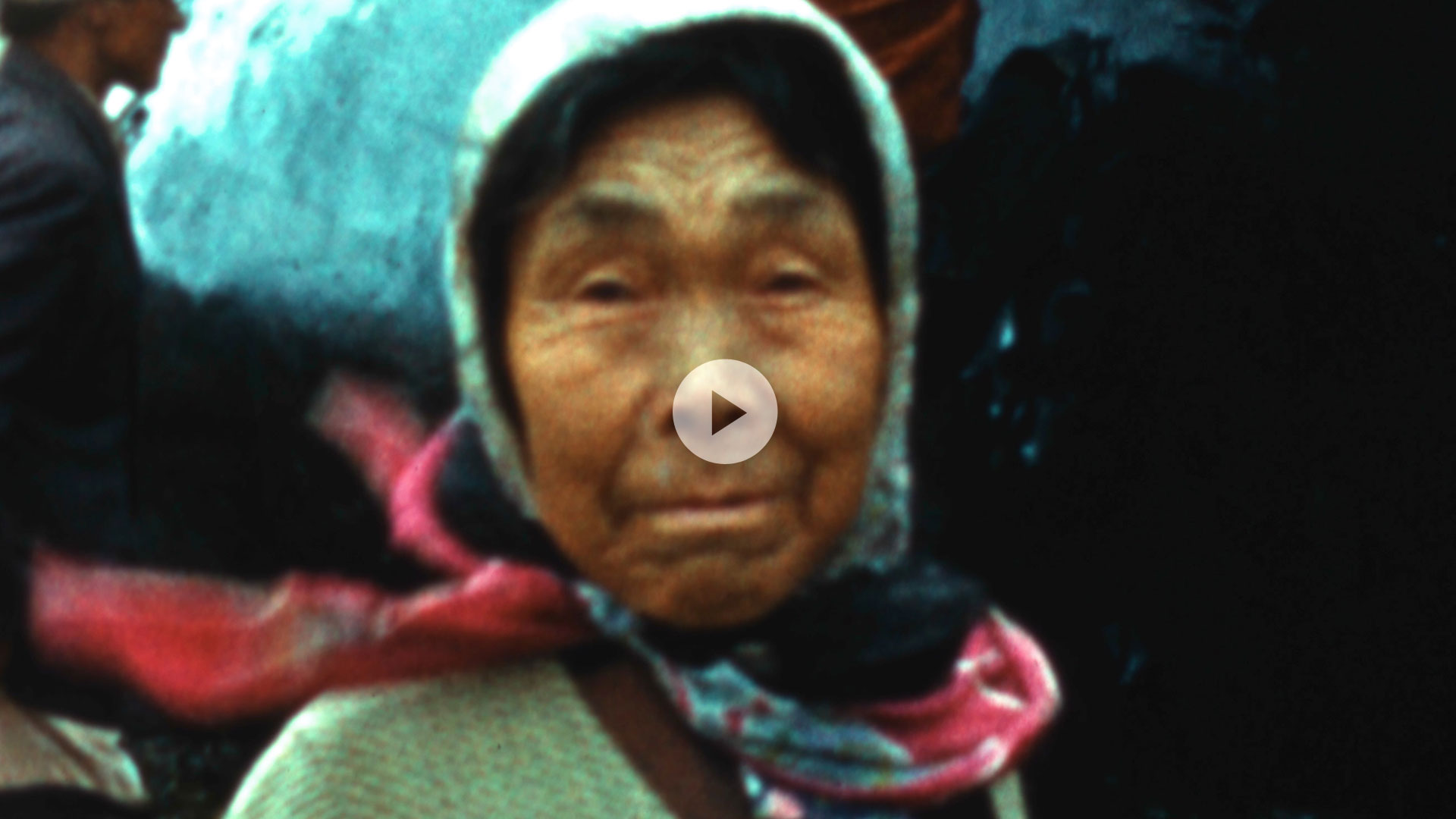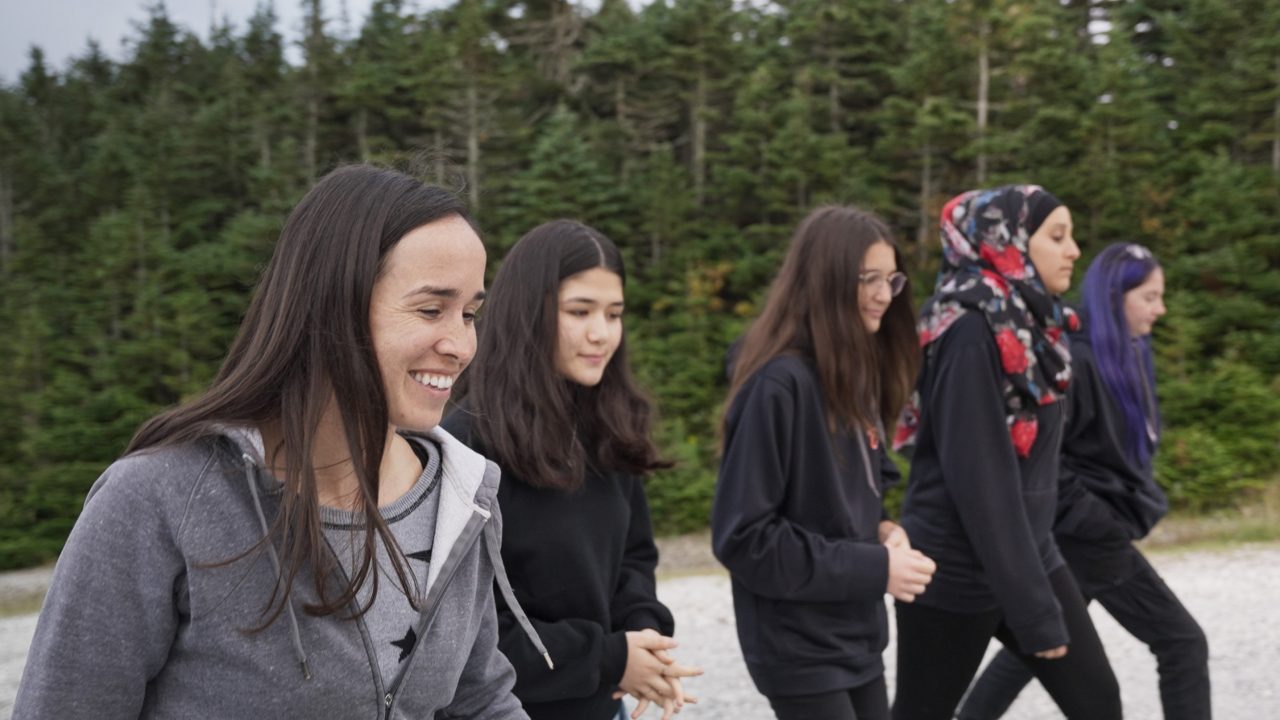
Mini-Lesson for Hebron Relocation
Mini-Lesson for Hebron Relocation
Mini-Lesson for Hebron Relocation
School Subjects:
- Social Studies – Canadian Politics and Government
- Indigenous Studies – Issues and Contemporary Challenges
- History – Canada 1946-1991
Ages: 15-17
Hebron Relocation, Holly Andersen, provided by the National Film Board of Canada
Keywords/Topics: Inuit, Relocation, Labrador, Canadian History, Indigenous
Overarching Question: What were the short-term and long-term impacts of the forced government relocation on Inuit from Hebron and Nutak in Labrador, and how are the ripples of that event still felt?
Warnings: Taking away Inuit homes and Lands; disappointment in government and missionary actions and mention of suicide.
Educational Synopsis: This film focuses on the forced government relocation of Inuit from Hebron and Nutak in Northern Labrador in 1959. This mini-lesson aims to provide a better understanding of the profound impact of government intervention on the lives of the Inuit. The lesson also explores concepts such as a subsistence lifestyle, differing notions of civilization and progress, and the relationship between physical places, such as the relocatees’ homes and stories of the land and people. The lesson allows students to sit with the strong emotions that come up when viewing the film, and reflect on the experience of grief and the way different cultures work through grief. Students will also engage with the filmmaker’s gratitude around receiving these stories and creatively respond to the work.
Pre-Activity: Exploring Vocabulary
Write a list of words where the students can see them, such as: relocation, grief, community, Inuit, home, Land, subsistence, forced relocation, legacy, self-Governance, intergenerational trauma, social attitudes, traditional influences, Land rights, economic policies, Culture.
Split the class into small groups. Each group takes a few words and finds definitions for them. Then they can share their findings with the whole class.
Activity 1: Relocation and Grief
Note: Before watching the film, teachers will share some context about what the students are about to see, as follows.
Inuit in Hebron lived a subsistence lifestyle, which depended on hunting, fishing and their connection to the land. They lived well in Hebron. However, the Newfoundland Government didn’t value these ways of living and had their own interests to pursue through “centralizing” and “civilizing” Inuit. We’re going to learn about this relocation through the eyes of Holly, a filmmaker who is now living in one of the relocatee’s homes.
Watch the entire Hebron Relocation film

Class discussion:
Different cultures approach and process grief in different ways.
- What does grief mean to you?
- What are some different ways people cope with loss?
- What do you think those who were forced to relocate were grieving?
Pause, reflect and journal.
Now, turn and talk to a partner:
- What are some of the daily tasks the families who were relocated still had to do, to take care of their families and community?
- How can individuals and communities process grief in ways that show resilience?
Everyone can then add their ideas to a collective mind map.
This could be creating a T-shape diagram on chart paper or a smartboard with the teacher that compares ways people process grief on the left, and healthy ways people process grief on the right.
Summary:
Students will think about the strength of a person’s whole being. They will have the opportunity to imagine what happened to generations of displaced northern Labrador Inuit and how Inuit responded. Students will explore how Inuit navigated the need to go on while feeling many emotions—for example, the grief of being forced to leave their homeland. Teachers and students have the opportunity to acknowledge the difficult and heavy emotions that come up because of relocation, and at the same time, recognize the resilience and strength of Inuit.
Activity 2: Engaging with the Past
Watch clip: 7:05-13:25
Dilapidated and abandoned Hebron building. Photo credit: Image from the film – Courtesy of National Film Board of Canada, 2022.
Class discussion or in small groups:
- How did watching this make you feel?
- Why did the officials decide to tell the Hebron inhabitants about the relocation in the church? What was the impact of this decision?
- What promises were made to the Hebron inhabitants that weren’t kept?
- What do you think Holly meant when she spoke about being grateful for the stories she was hearing?
- What do you think it would be like to live in the same house as someone who was relocated? How did living in one of these homes impact Holly?
Show and tell:
Holly describes a connection between the way she’s been living in her house and the history of the many other houses that were built in this same way.
Bring something into class that belonged to someone who came before you. This could be an ancestor or someone who lived in your community before you did. Describe its significance to the class and why you selected it.
Students could also write about this object first and then bring it in to share.
Summary:
Students will have the opportunity to articulate their feelings in response to this section of the film. They will think critically about why government officials chose to share the news of the relocation in the church, and the effects of this decision. They will also reflect on the way the government failed to keep its promises of a better life awaiting Inuit.
The last exercise helps students understand why Holly expresses deep gratitude for the story she received from Gus and how her relationship to her house evolves.
Activity 3: Impacts and Implications of Relocation
Watch clip: 00:13-1:20
Dilapidated and abandoned Hebron building. Photo credit: Image from the film – Courtesy of National Film Board of Canada, 2022.
Return to the initial list of words generated at the beginning of the lesson and consider the following questions:
- What does this film illustrate about the words you defined in the pre-activity?
- How did the government’s understanding of “civilization” and “progress” impact their actions towards Inuit?
- What do you wish the government had understood instead?
- What are some of the long-term impacts of the many relocations that have taken place on this land, for Inuit and for all Canadians?
Research project:
Research current challenges facing Indigenous communities:
- What are some of the current material needs and injustices being faced by these communities?
- What are some examples of the ways Indigenous communities are healing?
The following are offered as a list of possible topics for the students to research:
- Reclaiming Indigenous Languages
- The Truth and Reconciliation Commission’s Calls to Action
- Practices of the Labrador Inuit
- The policies and effectiveness of the Nunatsiavut Beneficiaries Program
- The resurgence of traditional practices (for example: Nalujuit night, the Christmas apple and candle service, and the use of Inuktitut on signs in public places)
Summary:
Students will think critically about the impact of differing worldviews and conceptions of progress and civilization, as well as the long-term impacts of the relocation and the government’s actions. They will engage imaginatively with rewriting history and reimagining the possibility for right relations. Students will also be invited to research the current realities of Indigenous and Inuit communities, as well as the many resurgent practices emerging across what is now called Canada. As they research these practices and initiatives, they will analyze the effectiveness of the Truth and Reconciliation Commission’s Calls to Action, as well as the impact of young people learning their traditional practices and languages.
Take Action: Connect with Hebron
Inspired by the film and the importance of intergenerational learning, classes can put together a digital package to send Holly and/or her neighbours, including a variety of media they create, inspired by her film. These can include artwork, cards, poetry, links to music or films the students create.
Use the Gmail address: hebronrelocationresponses@gmail.com
Related NFB Films About Inuit Relocation:
Additional Resources:
Hebron Mission National Historic Site of Canada | The Canadian Encyclopedia
Katie Haye is an Inuit educator, originally from Nain, Labrador. She moved to Makkovik in 1982 and started work with the Newfoundland-Labrador School Board in 1993. She is working as an Inuit Language teacher. She has one son and one daughter. Katie enjoys a good book, all kinds of music, and spending her time rod-fishing in the summer and ice-fishing in the spring.
A Glossary of Terms Used in the Hebron Relocation Mini-Lesson:
Relocation – Voluntarily or involuntarily moving to a place other than one’s homeland due to favourable or adverse circumstances. Favourable circumstances might include seeking better job opportunities, pursuing education, being close to family, etc. Adverse circumstances might include war, famine, racism, persecution, climate change or violence.
Grief – The feeling of sadness, and sometimes confusion, that one experiences after losing someone or something dear to one’s life. It can be the loss of a loved one, a home, a job or traditional ways of life.
Community – A group or groups of people who share similarities in ways of living and thinking.
Home – The place where one has cultural, emotional, and sometimes spiritual roots, a place that can be intertwined with memories of feeling safe, cared for, and loved, as well as having had experiences that have shaped one’s journey.
Land – From an Indigenous perspective, the place where the ancestors have lived from time immemorial and continue to live, caring for the water, the air, the earth and all its creatures. Traditional perspectives of care include values such as respecting life in all its forms by taking only what one needs, paying attention to the changes in the seasons and giving back (reciprocity).
Subsistence – Activities and practices within families or communities that maintain their livelihood, such as farming, agriculture, hunting, and gathering plants and medicines.
Forced relocation – The racist government practice of, in this context, displacing Indigenous people and moving them away from their homelands in order to gain access to natural resources, expand economic development and oppress their communities. Reserves are an example of relocation.
Legacy – The heritage passed on or left behind by ancestors throughout generations. This might include values, traditional practices, good habits and religious or spiritual practices.
Self-governance – The right that communities or groups of people have to identify and decide who can make decisions and who is accountable for those decisions, and to control the direction of their community without any external interference.
Social attitudes – Expressions of approval or disapproval towards people or objects based on learned values, beliefs and ways of thinking and feeling.
Traditional influences – People, stories, values, beliefs or any form or expression of culture that regulates or has an effect on how one conducts oneself.
Land rights – The inherent entitlement and responsibility of Indigenous Peoples to care for, protect, use, occupy and govern their territories, based on their historical presence acknowledged by Canadian and international laws.
Economic policies – A system of guidelines established by governments to guide decisions pertaining to the use and distribution of money, such as levels of taxation, interest rates and redistribution of income.
Culture – The ways in which a group of people or a society establish and follow social norms, behaviours, values, customs, laws, traditions, rituals, habits and beliefs, usually within a particular region or locale.
Pour lire cet article en français, cliquez ici.
Discover more Mini-Lessons | Watch educational films on NFB Education | Watch educational playlists on NFB Education | Follow NFB Education on Facebook | Follow NFB Education on Pinterest | Subscribe to the NFB Education Newsletter



